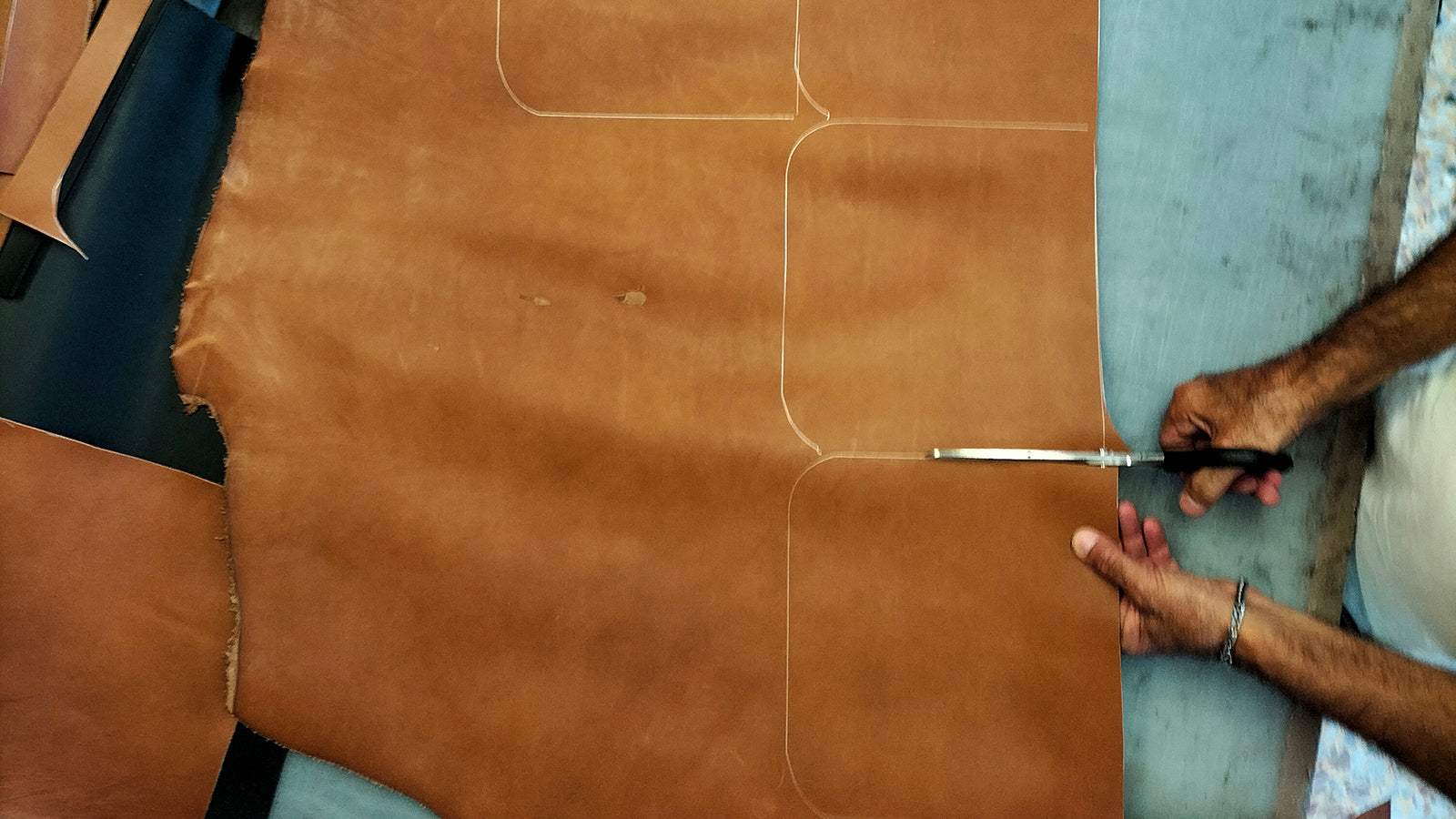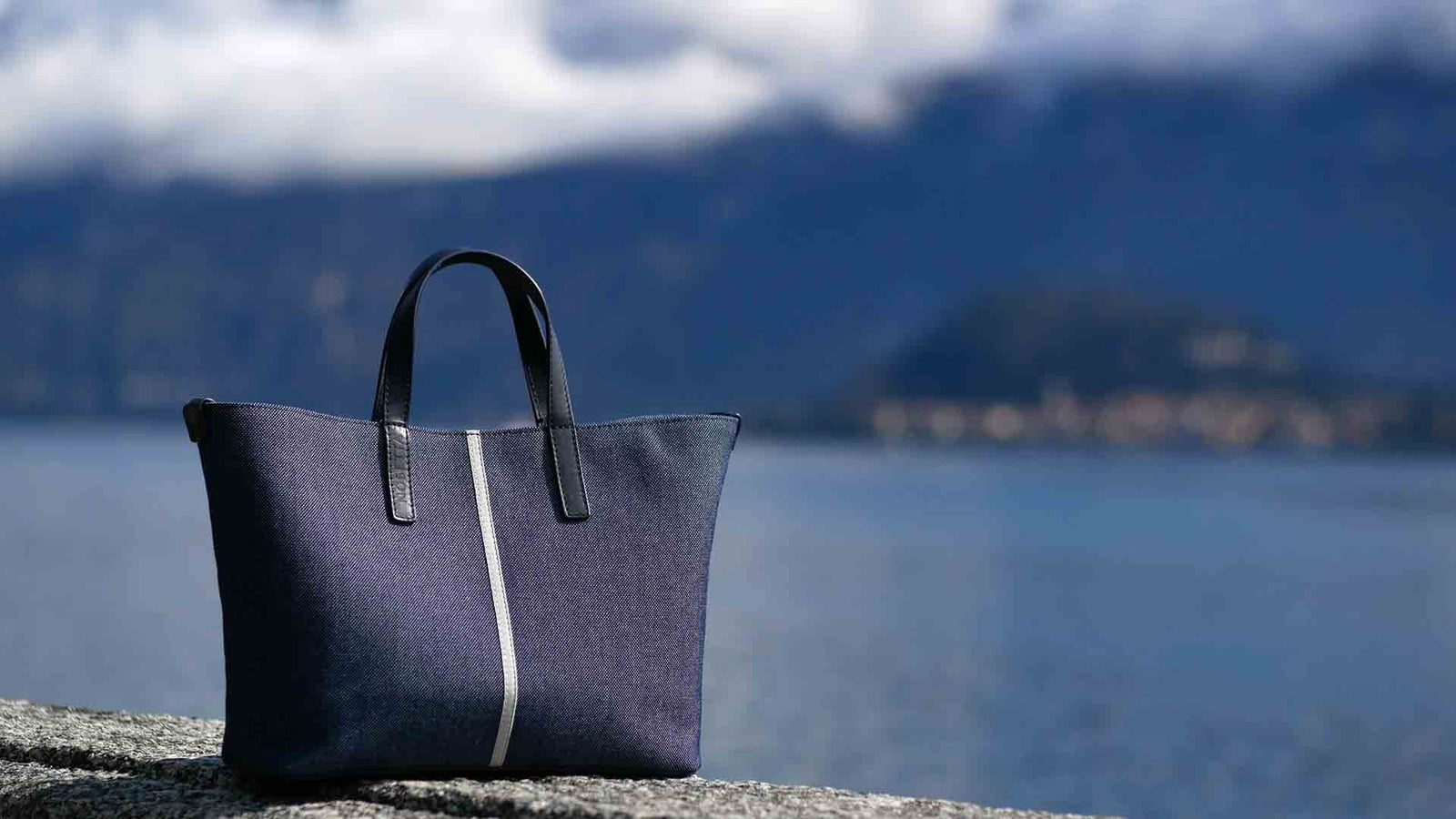Your Cart is Empty
Free EU Shipping · US Flat Rate $40
We only use vegetable tanned leather because it expresses our approach to high quality and the environment. It is an artisanal method in the treatment of leathers that Nosetta is proud to use and it has a very long history.
There is a lot of confusion about this and even his name can be misleading.
Contrary to what you might think, it is not a skin of plant origin derived for example from fungi or plants. Or a vegan alternative.
The acronym "Vegetable-tanned leather" refers to its particular processing, called tanning: a very ancient process dating back to prehistoric times that allows you to stop the organic decline of raw hides, ensuring their shelf-life and durability.
This process is also a symbol of Made in Italy craftsmanship, as it requires specific manual knowledge, a long working time, and above all the participation of 100% natural elements. The Italian tradition boasts many districts with centuries of experience, the most famous are in Tuscany and Campania, where the technique and passion are handed down "from father to son".
It is important to know that no animal is killed for its skin.
On the contrary, the raw hides used by tanneries derive from waste from the food industry, which would otherwise have a significant environmental impact on their disposal.

This processing has always been a necessity and has evolved over the millennia. And if in the beginning, we were talking about a by-product, in the long run, leather has become a raw material.
The "plant" method is so-called because it is entirely environmentally friendly. It is based, in fact, on the use of natural tannins obtained from the barks of mimosa, chestnut, oak (or similar) and assisted by new innovative technologies and the slow passage of time.

What distinguishes and makes this process special, concerning 10% of the total world production of leather, is summarized in the following points:
1. The slowness of the process: 60/90 days against the 24 hours of mass industrial tanning (the other 95% approximately)
2. The need for adequately trained personnel to follow all steps of the process: rehydration, hair removal, tincture soaking, drying, padding with special waxes, and finishing with waxes and protective sealant.
3. The possibility of using thicker leathers, with a greater body and character, is perfect for making bags.
4. The best aging is achieved thanks to the development over time of a rich patina with an unmistakable smell.
5. The total biodegradability of the product at the end of its life cycle, through the use of natural and renewable materials instead of azo, nickel, PCP, or chromium VI dyes, which are harmful not only to humans but also to the environment.
6. The anallergic characteristic, is perfect for sensitive cuticles or who have suffered from allergic reactions from contact with heavy metals, both economic as toxic and polluting.

It’s a fully circular process: many of the substances used during tanning are recovered, recycled, and reused in different areas; the hair removed from the raw hides is transformed into agricultural fertilizer and the sludge produced by the sewage treatment plants is converted into building material.
It can be concluded that vegetable-tanned leather is the only truly sustainable and safe alternative for the health of the person.
Certain places on Lake Como hold their secrets close. Villa La Cassinella, perched on a private peninsula near Lenno, is among the most discreet. As for its owner, speculation ranges from Richard Branson to various other names, though the villa itself maintains studied silence. Chef Alessia cooked here this summer, and she's sharing a holiday risotto recipe from those months—one that traces her journey from Como to Copenhagen's Michelin kitchens and back home.
Nestled in the historic villa of 19th-century opera legend Giuditta Pasta, Mandarin Oriental Lago di Como represents the pinnacle of Italian hospitality. The resort's breathtaking 40-meter infinity pool, designed by Herzog & De Meuron, appears to merge seamlessly with Lake Como's emerald waters. Century-old botanical gardens, Michelin-starred dining at L'ARIA, and an award-winning spa create an atmosphere of timeless elegance. In this sanctuary of authentic luxury, Nosetta's handcrafted Italian accessories find their natural home—understated pieces that complement the resort's philosophy of refined sophistication.
The small tote bag has become an essential accessory in the fashion world. Combining functionality and style, this compact bag offers enough space for an iPad, phone, and wallet without sacrificing elegance. Prestigious brands like Goyard and Marc Jacobs have elevated this accessory to a luxury icon, while Nosetta offers artisanal versions inspired by Lake Como at accessible prices. Made with high-quality materials, the small tote represents the perfect choice for those seeking a practical, elegant, and sustainable bag for everyday life.



